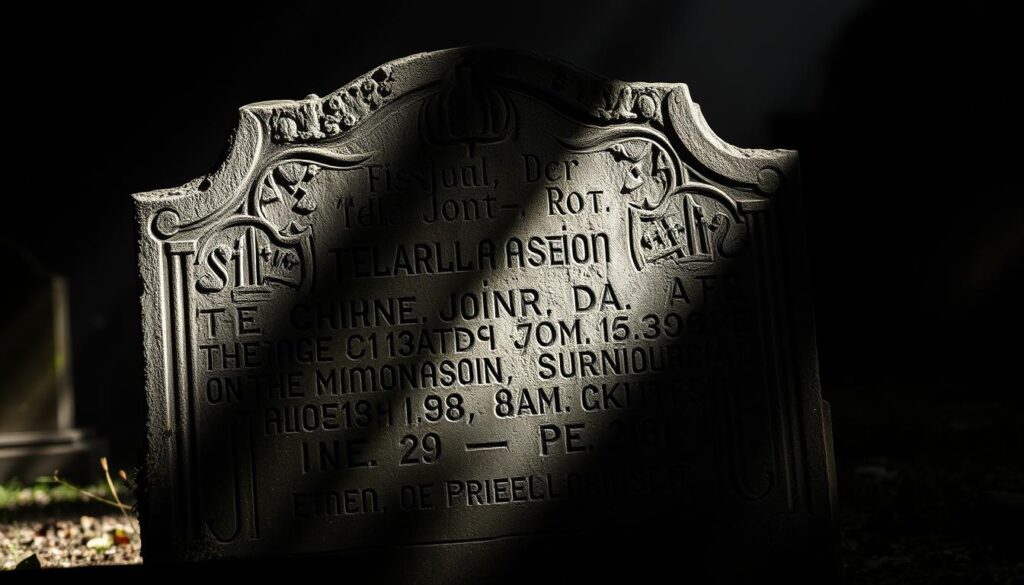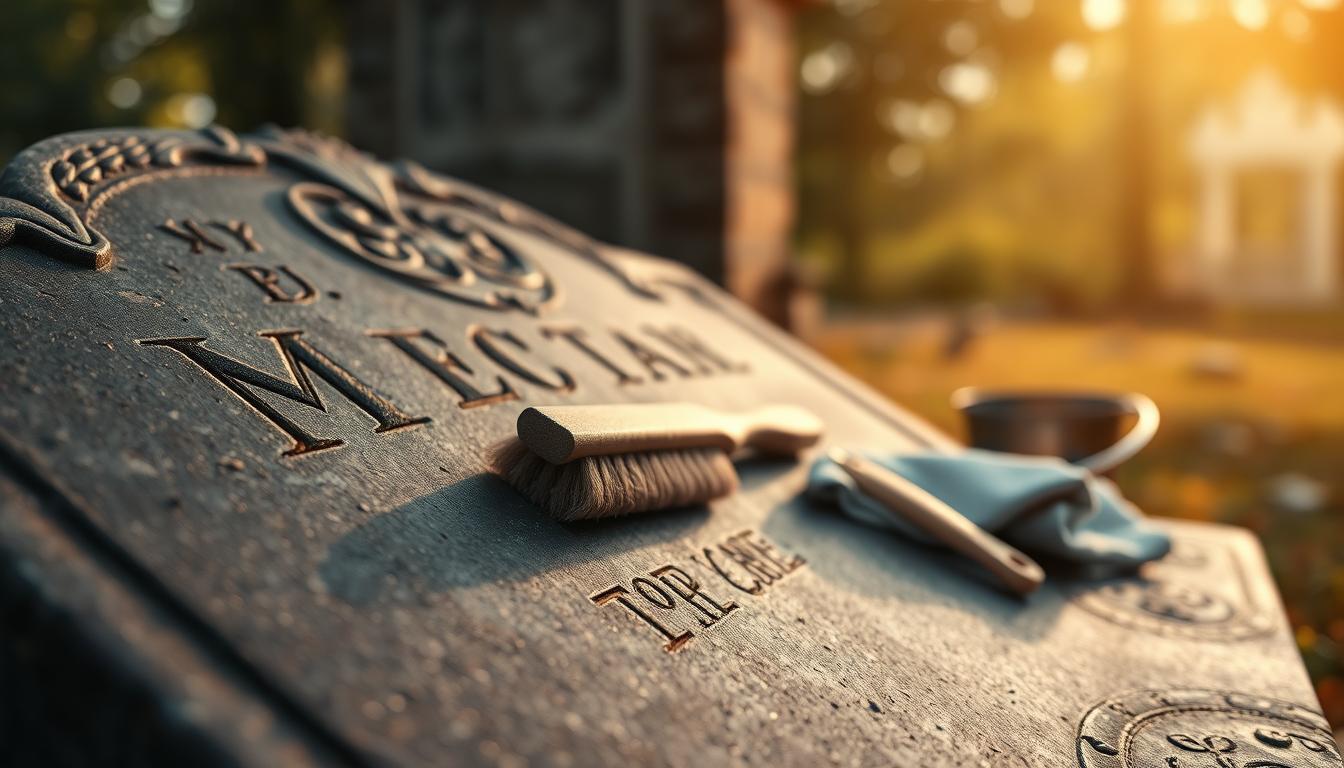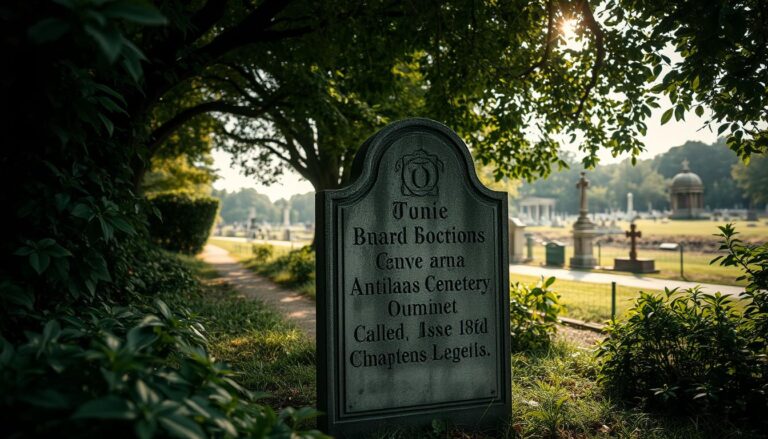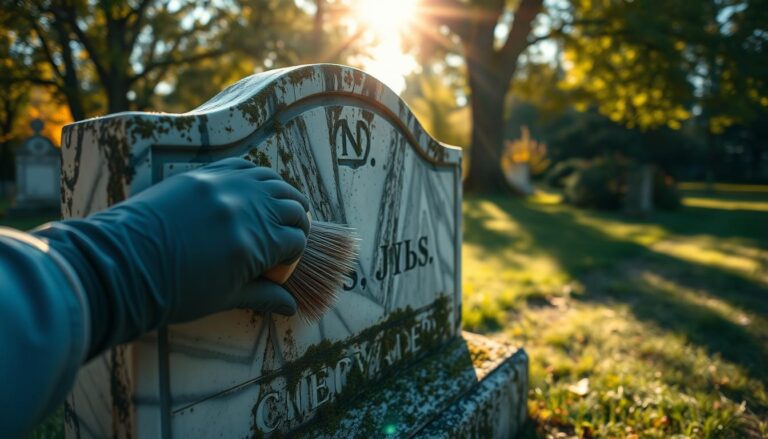My Top Tips for Effective Headstone Cleaning
As someone who has worked on numerous gravestone restoration projects, I’ve seen firsthand the impact that a well-maintained headstone can have on the overall appearance of a grave site. A clean headstone not only pays tribute to the deceased but also provides a sense of comfort and closure for loved ones. However, cleaning a headstone can be a daunting task, especially for those who are unsure of where to start.
In my experience, the key to effective headstone cleaning lies in understanding the type of stone and the level of dirt and grime it’s accumulated. By taking the right approach, you can restore a headstone to its original condition, revealing the intricate details and inscriptions that make it a meaningful tribute to the deceased.
Key Takeaways
- Understand the type of stone before cleaning
- Assess the level of dirt and grime
- Choose the right cleaning solution
- Avoid using harsh chemicals or abrasive materials
- Test a small area first
- Consider seeking professional help if unsure
Why Proper Headstone Cleaning Matters
Cleaning headstones is not just about removing dirt and grime; it’s about preserving the stories and memories etched into the stone. Proper headstone cleaning is crucial for maintaining the integrity of these historical monuments, which serve as a tangible link to our past.
As we delve into the importance of headstone cleaning, several key reasons come to the forefront. Here are a few critical aspects to consider:
Preserving Family History and Heritage
Headstones are more than just markers; they are gateways to understanding our ancestors’ lives, struggles, and achievements. By cleaning and preserving these monuments, we ensure that the stories of our loved ones are not lost to time. This preservation of family history is vital for maintaining a connection to our heritage.
Preventing Further Deterioration
Dirt, grime, and biological growth can accelerate the deterioration of headstones, leading to the loss of inscriptions and historical information. Proper cleaning techniques help prevent further damage, ensuring that these monuments remain legible and intact for generations to come. Regular cleaning and maintenance are key to slowing down the deterioration process.
Showing Respect for the Deceased
Cleaning a headstone is also an act of respect for the deceased. It demonstrates a commitment to honoring their memory and acknowledging their contribution to our lives and history. By taking the time to properly clean and maintain headstones, we show reverence for those who have come before us.
In conclusion, proper headstone cleaning is a multifaceted task that involves preserving family history, preventing deterioration, and showing respect for the deceased. By understanding the importance of this task, we can better appreciate the role that headstone cleaning plays in maintaining our connection to the past.
Understanding Different Headstone Materials
The material of a headstone is a critical factor in deciding the best cleaning technique. Different materials have unique characteristics that require specific cleaning approaches to maintain their integrity and appearance.
When cleaning headstones, it’s essential to understand the type of material used. This knowledge helps in selecting the right cleaning products and methods, ensuring that the headstone is cleaned effectively without causing damage.
Granite Headstones
Granite headstones are known for their durability and resistance to weathering. However, they still require regular cleaning to maintain their appearance. Granite cleaning involves using gentle cleaning products that won’t damage the stone or harm the inscriptions. A soft-bristled brush can be used to remove dirt and debris from the surface.
Marble Headstones
Marble headstones are more prone to damage than granite due to their softer nature. Marble restoration often requires specialized cleaning products and techniques to remove dirt and stains without causing further damage. It’s crucial to avoid using acidic or abrasive cleaners that can etch the marble surface.
Limestone and Sandstone
Limestone and sandstone headstones are more susceptible to weathering and erosion. Cleaning these stones requires a gentle approach to avoid causing further damage. A soft-bristled brush and a mild cleaning solution can be used to remove dirt and debris.
Bronze and Metal Markers
Bronze and metal markers require different cleaning approaches compared to stone headstones. A gentle cleaning solution and a soft cloth can be used to remove dirt and grime from the surface. Avoid using abrasive materials that can scratch or damage the metal.
Understanding the different materials used for headstones is crucial for effective cleaning and maintenance. By choosing the right cleaning products and techniques, you can preserve the appearance and integrity of the headstone.
Essential Tools and Supplies for Headstone Cleaning
Cleaning headstones effectively requires a combination of the right tools and techniques. To achieve the best results, it’s crucial to understand the necessary supplies and how to use them.
Non-Ionic Cleaners and D/2 Biological Solution
Non-ionic cleaners and D/2 Biological Solution are two of the most effective cleaning agents for headstones. Non-ionic cleaners are gentle on the stone and don’t leave residue, while D/2 Biological Solution is specifically designed to remove biological growth without damaging the headstone.
How I Use These Products Effectively
I apply non-ionic cleaners using a soft-bristled brush to gently scrub the headstone, followed by a thorough rinse. For tougher biological growth, I use D/2 Biological Solution, applying it according to the manufacturer’s instructions.
Brushes and Applicators
The right brushes and applicators are vital for effective headstone cleaning. I prefer using soft-bristled brushes for most headstones, as they are gentle on the surface.
My Favorite Brush Types for Different Materials
For granite and marble headstones, I use soft-bristled brushes. For limestone and sandstone, I opt for even softer brushes to prevent damage.
Water Sources and Containers
A steady supply of clean water is necessary for rinsing the headstone. I use a large container to mix cleaning solutions and water, making it easier to apply the solution to the headstone.
Personal Protective Equipment
When cleaning headstones, it’s essential to wear protective gear, including gloves and safety glasses, to prevent injury from cleaning solutions or debris.
| Tool/Supply | Description | Use |
|---|---|---|
| Non-Ionic Cleaner | Gentle cleaning agent | Cleaning headstones |
| D/2 Biological Solution | Removes biological growth | Tough biological growth |
| Soft-bristled Brushes | Gentle on headstone surfaces | Applying cleaning solutions |
Preparing for Your Headstone Cleaning Project
Before diving into a headstone cleaning project, it’s crucial to prepare thoroughly to ensure a successful outcome. As I have learned from my experience, a well-prepared project is a successful one. In this section, I will guide you through the essential steps to prepare for your headstone cleaning project.
First and foremost, it’s essential to obtain the necessary permissions before starting your headstone cleaning project. This involves checking with local authorities, cemetery administrators, or family members to ensure that you have the required permits and approvals.
Obtaining Necessary Permissions
To avoid any potential issues or conflicts, I always make sure to obtain the necessary permissions. This may involve submitting a request or application to the relevant authorities, providing documentation or information about the headstone and the proposed cleaning method. By doing so, you can ensure that your project is compliant with local regulations and cemetery rules.
Weather Considerations
Another critical factor to consider is the weather. Inclement weather, such as heavy rain or extreme temperatures, can impact the cleaning process and the effectiveness of the cleaning solution. I recommend checking the weather forecast before starting your project and postponing it if necessary. This will help prevent any potential damage to the headstone or the surrounding area.
Documenting Before and After
Documenting the headstone before and after cleaning is also crucial. This involves taking photographs or videos of the headstone, noting any existing damage or deterioration, and recording the cleaning process. By doing so, you can track the progress of the cleaning project and provide a visual record of the results. As I always say, “A picture is worth a thousand words,” and in this case, it’s a valuable record of the headstone’s condition.
By following these preparatory steps, you can ensure a successful headstone cleaning project that is safe, effective, and respectful of the deceased and their family.
My Step-by-Step Headstone Cleaning Process
As I approach the task of cleaning a headstone, I consider the importance of preserving the memorial for years to come. A thorough cleaning process not only enhances the appearance of the headstone but also helps to prevent deterioration. In this section, I will outline my step-by-step guide on how to clean headstones effectively.
Initial Assessment and Documentation
Before starting the cleaning process, I conduct an initial assessment of the headstone to identify any potential issues or areas of concern. This involves documenting the condition of the headstone through photographs, which serves as a reference point for the cleaning process and helps to track any changes or improvements.
Removing Debris and Vegetation
The first step in the cleaning process is to remove any debris or vegetation from the headstone. This is done gently to avoid causing damage to the stone or inscriptions. I use a soft-bristled brush or a specialized tool to remove loose dirt, leaves, or other foreign materials.
Pre-Soaking the Stone
Pre-soaking the headstone is a crucial step that helps to loosen dirt and grime, making the cleaning process more effective. I use a gentle cleaning solution and water to pre-soak the stone, allowing it to sit for a few minutes before proceeding.
Applying Cleaning Solution
Once the headstone is pre-soaked, I apply a cleaning solution specifically designed for the type of stone being cleaned. The solution is applied evenly, ensuring that all areas of the headstone are covered.
Gentle Scrubbing Techniques
Gentle scrubbing is essential to avoid damaging the headstone or inscriptions. I use a soft-bristled brush to scrub the stone, working in a gentle, circular motion. For delicate inscriptions,
My Technique for Delicate Inscriptions
involves using a specialized brush with soft bristles and a gentle touch to avoid causing damage or wear.
Thorough Rinsing
After scrubbing, the headstone is thoroughly rinsed with clean water to remove any remaining dirt or cleaning solution. This step is crucial to prevent any residue from being left behind, which could potentially damage the stone over time.
By following this step-by-step guide, you can effectively clean your headstone, preserving its condition and ensuring it remains a lasting tribute to the deceased.
Dealing with Common Headstone Problems
As I delve into the intricacies of headstone maintenance, it becomes clear that addressing common issues is crucial for preserving these monuments. Headstones, over time, can develop various problems that require careful consideration and specialized techniques to resolve.

One of the most prevalent issues is the growth of biological organisms on the surface of the headstone. This can lead to discoloration and damage if not addressed properly.
Removing Stubborn Biological Growth
Stubborn biological growth can be a significant challenge when cleaning headstones. Using a D/2 Biological Solution is often effective in removing such growth without damaging the stone. This solution is specifically designed to target biological organisms while being gentle on the headstone material.
Addressing Stains and Discoloration
Stains and discoloration are common problems that can detract from the appearance of a headstone. Techniques for addressing these issues include using appropriate cleaning solutions and gentle scrubbing techniques to remove the stains without damaging the stone.
Managing Lichen and Moss
Lichen and moss can be particularly problematic on headstones, as they can cause significant discoloration and damage over time. Effective management involves a combination of cleaning and preventive measures to discourage future growth.
By understanding and addressing these common problems, it’s possible to preserve headstones for generations to come, ensuring that the memories and histories they represent are not lost.
What NOT to Do: Harmful Practices in Headstone Cleaning
The art of headstone cleaning involves not only applying the right techniques but also avoiding harmful practices. When cleaning a headstone, it’s essential to be aware of the methods and materials that can cause more harm than good.
Avoiding certain practices can help preserve the integrity of the headstone and ensure that it remains a lasting tribute to the deceased. Some of the most common harmful practices to avoid include using abrasive tools and materials, applying dangerous chemical cleaners, and employing pressure washing techniques.
Avoiding Abrasive Tools and Materials
Abrasive tools and materials can scratch or damage the surface of a headstone, causing irreparable harm. Avoid using wire brushes, harsh scrubbers, or other abrasive materials that can wear away the stone.
Dangerous Chemical Cleaners to Avoid
Chemical cleaners can be just as damaging as abrasive tools. Avoid using bleach, acid-based cleaners, or other harsh chemicals that can etch or discolor the stone. Instead, opt for gentle, non-ionic cleaners that are specifically designed for headstone cleaning.
Pressure Washing Risks
Pressure washing can be particularly damaging to headstones, especially those made of softer materials like sandstone or limestone. The high-pressure stream can dislodge particles, cause erosion, or create cracks in the stone.
| Harmful Practice | Potential Damage |
|---|---|
| Abrasive Tools and Materials | Scratches, surface damage |
| Dangerous Chemical Cleaners | Etching, discoloration |
| Pressure Washing | Erosion, cracking, dislodging particles |
By avoiding these harmful practices, you can help ensure that the headstone remains a dignified and lasting tribute to the deceased.
Special Techniques for Difficult-to-Clean Headstones
Difficult-to-clean headstones demand specialized techniques and careful handling. Whether you’re dealing with severely weathered stones, deeply carved inscriptions, or fragile markers, a tailored approach is essential to preserve the integrity of the headstone.
Working with Severely Weathered Stones
Severely weathered stones require a gentle yet effective cleaning method. I recommend using a soft-bristled brush to remove loose debris, followed by a gentle cleaning solution that won’t further damage the stone. Avoid using harsh chemicals or abrasive tools, as these can cause irreparable harm. For stones with significant weathering, consider using a specialized cleaning product designed for weathered surfaces.
| Weathering Type | Recommended Cleaning Method |
|---|---|
| Mild Weathering | Soft-bristled brush and gentle cleaning solution |
| Moderate Weathering | Specialized cleaning product for weathered surfaces |
| Severe Weathering | Professional conservation or restoration services |
Cleaning Deeply Carved Inscriptions
Deeply carved inscriptions require a cleaning approach that targets the intricate details without damaging the surrounding stone. I use a soft-bristled brush to gently sweep away debris, followed by a gentle cleaning solution applied with a soft-bristled applicator. For particularly stubborn grime, a specialized cleaning product may be necessary.

Approaches for Fragile or Damaged Markers
When dealing with fragile or damaged markers, it’s essential to exercise extreme caution to avoid causing further damage. I recommend using a soft, dry brush to gently remove loose debris, followed by a gentle, non-invasive cleaning method. For fragile markers, consider seeking the advice of a professional conservator or restorer to ensure the best possible outcome.
Seasonal Headstone Cleaning Tips
Different seasons bring unique challenges to headstone maintenance, requiring a tailored cleaning strategy. As the weather and temperature fluctuate throughout the year, it’s essential to adjust your cleaning approach to ensure the longevity of the monument.
Understanding the seasonal factors that impact headstone cleaning is crucial for preserving these monuments. In the following sections, we will explore the considerations for spring and summer cleaning, as well as the precautions to take during fall and winter.
Spring and Summer Cleaning Considerations
During spring and summer, headstones are exposed to increased biological growth due to warmer temperatures and higher humidity. To combat this, use a gentle cleaning solution that is specifically designed to remove lichen, moss, and other biological growth without damaging the stone. Regular cleaning during these seasons can help prevent the buildup of debris and reduce the risk of long-term damage.
Fall and Winter Precautions
In the fall and winter, headstones are subjected to harsh weather conditions, including freezing temperatures, snow, and ice. To protect your headstone during these seasons, avoid using harsh chemicals or abrasive cleaners that can damage the stone or compromise its integrity. Instead, focus on gentle cleaning methods and consider applying a protective coating to shield the headstone from the elements.
Establishing a Maintenance Schedule
To ensure the long-term preservation of your headstone, it’s essential to establish a regular maintenance schedule. This can include cleaning the headstone at least twice a year, or more frequently if it’s exposed to harsh weather conditions. By staying on top of maintenance, you can help prevent damage and keep the headstone looking its best.
Preserving Headstones After Cleaning
Preserving a headstone after cleaning is just as important as the cleaning process itself. As I always say, a clean headstone is a preserved headstone. Proper preservation techniques can significantly extend the life of the monument, maintaining its integrity and the memories it represents.
To achieve this, it’s crucial to understand the difference between natural aging and preventable damage. Natural aging refers to the inevitable wear and tear that occurs over time due to exposure to the elements. However, preventable damage, such as that caused by harsh cleaning products or neglect, can be avoided with proper care.
Natural Aging vs. Preventable Damage
Natural aging is an unavoidable process that affects all headstones. Weathering, erosion, and biological growth can all contribute to the deterioration of the stone. On the other hand, preventable damage can be caused by human error, such as using abrasive cleaners or neglecting regular maintenance. By understanding the causes of damage, we can take steps to prevent it.
Protective Measures for Different Materials
Different headstone materials require unique protective measures. For example, granite headstones can benefit from a water-repellent coating, while marble headstones may require a more gentle, non-invasive approach. Limestone and sandstone headstones are more prone to erosion and may need additional protection from the elements.
When to Seek Professional Conservation Help
While many preservation tasks can be performed by individuals, some situations require professional conservation expertise. If a headstone is severely deteriorated, or if you’re unsure about the best course of action, it’s best to seek the help of a professional conservator. They can provide guidance on the best preservation techniques and help ensure the long-term integrity of the monument.
By taking the necessary steps to preserve a headstone after cleaning, we can ensure that the monument remains a lasting tribute to the deceased. As I’ve seen time and time again, a well-preserved headstone can be a powerful symbol of respect and remembrance.
Conclusion: Honoring the Past Through Proper Headstone Cleaning
As we conclude this comprehensive guide, it’s clear that proper headstone cleaning is a vital aspect of honoring the past and preserving our cultural heritage. By understanding the different types of headstones, using the right tools and techniques, and avoiding harmful practices, individuals can play a significant role in maintaining these historical markers.
I have emphasized the importance of gentle cleaning methods, suitable for various headstone materials, to prevent damage and deterioration. By adopting these practices, we not only preserve the integrity of the headstones but also pay respect to those who have come before us.
Proper headstone cleaning is not just about removing dirt and grime; it’s about honoring the past and the individuals who have shaped our history. By following the guidelines outlined in this article, you can ensure that these historical markers continue to tell the stories of our ancestors for generations to come.
As we move forward, it’s essential to remember that preserving our cultural heritage is an ongoing task. Regular maintenance and careful cleaning are crucial to extending the life of these headstones, allowing us to continue honoring the past through proper headstone cleaning.






